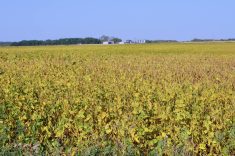It’s very hard to know what’s going on,” one trader said of the volatile ICE Futures canola market during the last full trading week of March, as prices were all over the place and a number of rumours circulated in the market.
The nearby May contract traded within a $50-per-tonne range during the week, with large swings on a daily basis. New-crop months weren’t quite as choppy, but movement from day to day and even hour to hour was still hard to pin down. The underlying fundamentals of tight old-crop supplies remained supportive, but that story hasn’t changed in months and fund traders adjusting positions accounted for much of the activity that saw values well off of their record highs.
Read Also

Canadian canola prices hinge on rain forecast
Canola markets took a good hit during the week ending July 11, 2025, on the thought that the Canadian crop will yield well despite dry weather.
There were unconfirmed reports during the week that one or more Canadian oilseed processors had purchased canola from Ukraine for delivery before Canada’s new crop is harvested. The logistics of such a move are questionable, given phytosanitary discrepancies between the two countries, but any imports were generally seen as bearish if proven true.
While the need to bring in canola across the ocean to supply domestic processors highlights Canada’s tight supply situation, it also shows that Prairie prices may have risen so high that imports are a cheaper option.
Talk that China had cancelled some previous purchases of Canadian canola was another bearish influence on prices during the week.
Beyond any background market chatter, the major attention now should be shifting to the upcoming North American growing season.
A pair of acreage and stocks reports from the U.S. Department of Agriculture, set for release on March 31, could provide some nearby direction for the North American grains and oilseeds heading into March. The prospective plantings report will be watched especially closely, as the seasonal battle for acres between soybeans and corn heats up. Solid prices for both crops are expected to lead to record seeded area in the U.S., as farmers plant fields that have been left fallow in recent years. However, the balance between the crops remains to be seen, with any surprises in the data likely to swing the futures markets.
Official Canadian acreage estimates will be released at the end of April, with many crops also pencilling out very favourably this spring.
While Canada needs a large canola crop in 2021-22 to restock its tight supplies, the oilseed is expensive to grow and actual seeded area may not see much of an increase. That will make weather conditions through the growing season very important, especially as much of the Prairies will be entering the spring on the dry side.




















